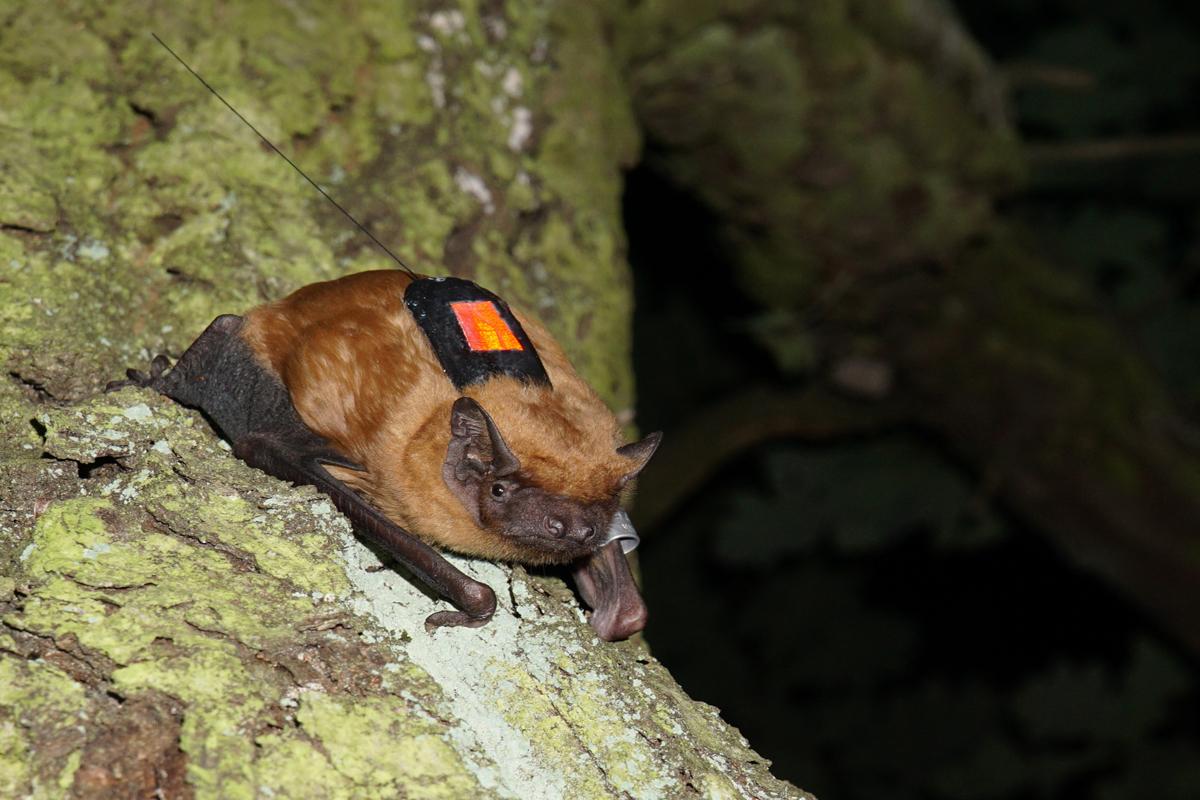Biologists at the Museum für Naturkunde Berlin used miniaturized proximity sensors to investigate maternal care in maternity colonies of bats. Mothers and their offspring were tagged with ‚next-generation‘ tracking sensors which documented social interactions around the clock. This novel technology enabled the researchers to observe mothers guiding their offspring to new roosting sites.
Many bat species living in temperate zones display a remarkable social behavior, with the females returning every year to their birthplace to commonly rear their young. Common noctule bats give birth to one to two pups which are nursed for several weeks even after fledging. During this time of growing independence, juveniles have to learn where to roost and where to forage. However, the mechinsms of acquiring such crucial information has been in the dark up until now, because bat behavior is notoriously difficult to study in the wild.
Sophisticated technology is key to observe free-ranging bats. The DFG Research unit BATS involving scientists of Museum für Naturkunde Berlin developed a ‚next generation tracking system‘ based on wireless sensor tehnology to master the challenges of studying bats in their natural habitats. The team designed miniaturized proximity sensors which weigh only half as much as a 1-cent coin. These animal-borne tags document encounters among individual bats and hence enable the researchers to study group dynamics during roost switching and foraging. The collected data revealed that roost-switching juveniles are often in company with their mothers, which appeared to guide their offspring to new roosting sites. However, during foraging the offspring fend for themselves. Researchers have long speculated about such guidance behavior in bats; however, only the technological advances of the DFG research unit enabled the researchers to observe these rare events. It remains unknown how juvenile bats learn where and how to forage, yet we now know that they do not depend upon their mothers.
Published in:
Ripperger S, Günther L, Wieser H, Duda N, Hierold M, Cassens B, Kapitza R, Kölpin A, Mayer F. 2019 Proximity sensors on common noctule bats reveal evidence that mothers guide juveniles to roosts but not food. Biol. Lett. 20180884. http://dx.doi.org/10.1098/rsbl.2018.0884
Photos can be downloaded here:
http://download.naturkundemuseum-berlin.de/presse/Fledermausmütter
The photos can be used free of charge as coverage in correlation with press release.
Pictures
Figure 1: female noctule bat carrying a miniaturized tracking sensor; © Simon Ripperger
Figure 2: female noctule bat carrying a miniaturized tracking sensor, front view; © Simon Ripperger
Figure 3: miniaturized tracking sensor, developed by the DFG research unit BATS; © Simon Ripperger
